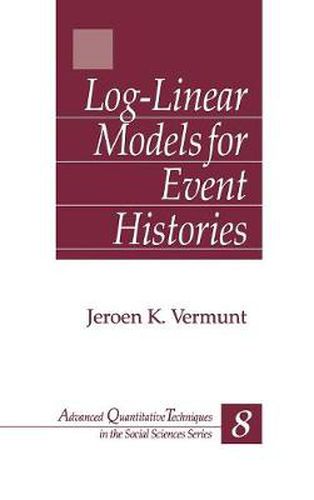Readings Newsletter
Become a Readings Member to make your shopping experience even easier.
Sign in or sign up for free!
You’re not far away from qualifying for FREE standard shipping within Australia
You’ve qualified for FREE standard shipping within Australia
The cart is loading…






Event history analysis has been a useful method in the social sciences for studying the processes of social change. However, a main difficulty in using this technique is to observe all relevant explanatory variables without missing any variables. This book presents a general approach to missing data problems in event history analysis which is based on the similarities between log-linear models, hazard models and event history models. It begins with a discussion of log-rate models, modified path models and methods for obtaining maximum likelihood estimates of the parameters of log-linear models. The author then shows how to incorporate variables with missing information in log-linear models - including latent class models, modified path models with latent variables and log-linear models for non-response.Other topics covered are: the main types of hazard models; censoring; the use of time-varying covariates; models for competing risks; multivariate hazard models; and a general approach for dealing with missing data problems - including measurement error in the dependent variable, measurement error in the covariates, partially missing information in the dependent variable and partially observed covariate values.
$9.00 standard shipping within Australia
FREE standard shipping within Australia for orders over $100.00
Express & International shipping calculated at checkout
Event history analysis has been a useful method in the social sciences for studying the processes of social change. However, a main difficulty in using this technique is to observe all relevant explanatory variables without missing any variables. This book presents a general approach to missing data problems in event history analysis which is based on the similarities between log-linear models, hazard models and event history models. It begins with a discussion of log-rate models, modified path models and methods for obtaining maximum likelihood estimates of the parameters of log-linear models. The author then shows how to incorporate variables with missing information in log-linear models - including latent class models, modified path models with latent variables and log-linear models for non-response.Other topics covered are: the main types of hazard models; censoring; the use of time-varying covariates; models for competing risks; multivariate hazard models; and a general approach for dealing with missing data problems - including measurement error in the dependent variable, measurement error in the covariates, partially missing information in the dependent variable and partially observed covariate values.